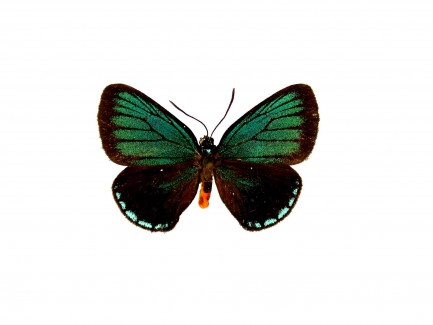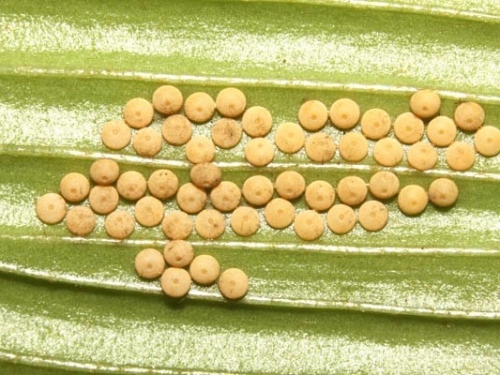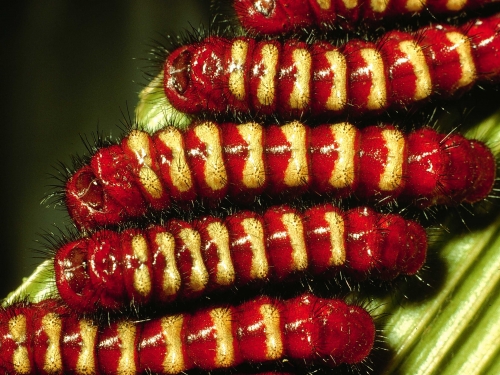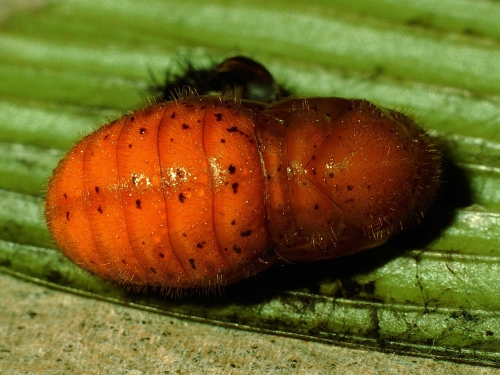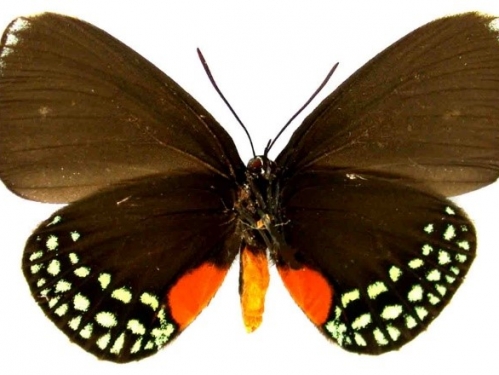A male Atala butterfly (Eumaeus atala) held in the Smithsonian collections seen from above.
The Atala butterfly (Eumaeus atala) and its five closest relatives in the genus Eumaeus display their toxicity. This sextet’s toxicity comes from what they eat as caterpillars: plants called cycads that have been around since before dinosaurs roamed the Earth and contain a potent liver toxin called cycasin.
New research published in the Feb. 8 issue of the journal the Proceedings of the National Academy of Sciences and led by the Smithsonian’s National Museum of Natural History butterfly curator Bob Robbins tells the evolutionary tale of how these six poisonous butterflies gained their toxin-laced defenses as well as the bold colors and behaviors that tell all would-be predators to steer clear.

